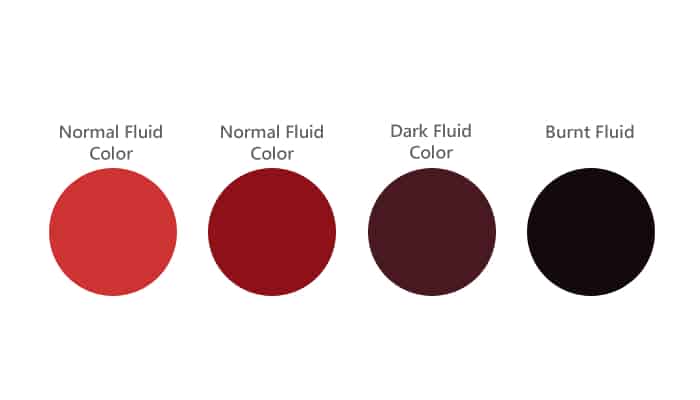Understanding Transmission Fluid for Your Acura TL
When it comes to maintaining your 2004 Acura TL, one of the most crucial aspects is ensuring that you use the correct transmission fluid. The right fluid not only keeps your transmission running smoothly but also extends its lifespan. Let’s dive into the specifics of what you need to know about transmission fluid for your Acura TL.
Manufacturer’s Recommendations
| Popular posts |
|---|
| What to do to prolong the life of your manual gearbox |
| Automatic transmission: what it is, how it works |
For the 2004 Acura TL, Honda recommends using Honda ATF-Z1 (or its equivalent). This fluid is specifically formulated to meet the needs of Honda and Acura vehicles, ensuring optimal performance and protection. Using the manufacturer-recommended fluid is essential for several reasons:
- Compatibility: Honda ATF-Z1 is designed to work seamlessly with the transmission components in your TL, reducing the risk of wear and tear.
- Performance: This fluid provides excellent lubrication, ensuring smooth shifting and overall performance of the transmission.
- Temperature Stability: The fluid is engineered to maintain its properties even under extreme temperatures, which is critical for the longevity of your transmission.
Specifications of Honda ATF-Z1
Understanding the specifications of Honda ATF-Z1 can help you appreciate why it’s the best choice for your Acura TL. Here are some key characteristics:
Viscosity
- Viscosity Index: The fluid has a high viscosity index, which means it maintains a consistent thickness across a wide range of temperatures.
- Low-Temperature Flow: It flows easily at low temperatures, ensuring that your transmission operates smoothly even in cold weather.
Friction Properties
- Friction Modifiers: Honda ATF-Z1 contains specific friction modifiers that enhance the performance of the transmission, allowing for smoother shifts.
- Anti-Wear Agents: The fluid includes anti-wear additives that protect the internal components of the transmission from damage.
Why You Should Avoid Other Fluids
You might be tempted to use other types of transmission fluids, especially if they claim to be compatible. However, using non-recommended fluids can lead to several issues:
- Incompatibility: Non-Honda fluids may not be compatible with the seals and gaskets in your transmission, leading to leaks and premature failure.
- Poor Performance: Alternative fluids may not provide the same level of protection and performance, resulting in rough shifting and potential transmission damage.
- Warranty Concerns: If your vehicle is still under warranty, using the wrong fluid could void your coverage, leaving you stuck with costly repairs.
In summary, sticking with Honda ATF-Z1 for your 2004 Acura TL is not just a recommendation; it’s a necessity for maintaining the health of your transmission. Always consult your owner’s manual or a trusted mechanic if you have any doubts about the type of fluid to use.
Recommended Oil Brands for Your Acura TL Transmission Fluid
When it comes to keeping your 2004 Acura TL running smoothly, choosing the right transmission fluid is crucial. While Honda ATF-Z1 is the manufacturer-recommended fluid, many Acura owners have shared their experiences with various brands that meet or exceed these specifications. Here’s a look at some of the most recommended oil brands based on feedback from forums and owner reviews.
Honda ATF-Z1
It’s no surprise that the original Honda ATF-Z1 tops the list. This fluid is specifically designed for Honda and Acura vehicles, and many owners swear by it. Here are some reasons why it remains a favorite:
- Proven Performance: Owners report smoother shifts and better overall transmission performance when using Honda ATF-Z1.
- Compatibility: This fluid is guaranteed to be compatible with all Acura TL components, reducing the risk of leaks and wear.
- Long-Lasting: Many users have noted that their transmissions have lasted longer when using the recommended fluid.
Valvoline MaxLife ATF
Valvoline MaxLife ATF is another popular choice among Acura TL owners. This fluid is designed for high mileage vehicles and offers several benefits:
- Multi-Vehicle Compatibility: It meets the specifications for Honda ATF-Z1, making it a suitable alternative.
- Enhanced Protection: Users report that it provides excellent protection against wear and tear, especially in older transmissions.
- Improved Shifting: Many owners have experienced smoother shifting and better overall performance after switching to Valvoline MaxLife ATF.
Mobil 1 Synthetic ATF
Mobil 1 Synthetic ATF is a synthetic fluid that has garnered a lot of positive feedback from Acura TL owners. Here’s what makes it stand out:
- High-Temperature Stability: This fluid maintains its viscosity even under extreme conditions, which is crucial for performance.
- Excellent Lubrication: Users have reported that it provides superior lubrication, leading to less friction and wear on transmission components.
- Longer Change Intervals: Many owners have noted that they can go longer between fluid changes when using Mobil 1 Synthetic ATF.
Castrol Transmax Import Multi-Vehicle ATF
Castrol Transmax Import is another option that has received favorable reviews from Acura TL owners. Here’s why it’s worth considering:
- Designed for Imports: This fluid is specifically formulated for import vehicles, making it a good match for the Acura TL.
- Versatile Use: It meets the requirements for Honda ATF-Z1, making it a reliable alternative.
- Positive Owner Feedback: Many users have reported improved shifting and overall performance after switching to Castrol Transmax.
Royal Purple Max ATF
Royal Purple Max ATF is a premium synthetic fluid that has gained a loyal following among Acura enthusiasts. Here’s what users have to say:
- High Performance: Owners report noticeable improvements in shifting performance and responsiveness.
- Protection Against Wear: This fluid contains advanced additives that provide excellent protection against wear and tear.
- Enhanced Fuel Efficiency: Some users have noted better fuel economy after switching to Royal Purple Max ATF.
Owner Experiences and Recommendations
Many Acura TL owners frequent online forums to share their experiences with various transmission fluids. Here are some common themes and recommendations:
- Stick with the Manufacturer: A majority of owners emphasize the importance of using Honda ATF-Z1 or a compatible alternative to avoid potential issues.
- Monitor Performance: Several users suggest keeping an eye on shifting performance and any unusual noises after changing the fluid. If something feels off, it’s worth investigating.
- Don’t Skimp on Quality: Many owners agree that investing in a high-quality fluid pays off in the long run, reducing the likelihood of costly repairs.
In summary, while Honda ATF-Z1 is the go-to choice for your 2004 Acura TL, several other brands have proven to be reliable alternatives based on owner feedback. Always ensure that any fluid you choose meets the necessary specifications to keep your transmission running smoothly.
Change Interval for Your Acura TL Transmission Fluid
Maintaining your 2004 Acura TL involves regular transmission fluid changes to ensure the longevity and performance of your vehicle. Understanding the recommended change intervals and the implications of partial transmission oil changes is crucial for every owner.
Recommended Change Interval
For the 2004 Acura TL, the general recommendation for changing the transmission fluid is every 30,000 to 60,000 miles (approximately 48,000 to 96,000 kilometers). However, this can vary based on driving conditions and habits. Here are some factors to consider:
- Driving Conditions: If you frequently drive in stop-and-go traffic, tow heavy loads, or operate in extreme temperatures, you may need to change the fluid more often.
- Fluid Condition: Regularly checking the condition of your transmission fluid can also guide you. If it appears dark or has a burnt smell, it’s time for a change.
- Owner’s Manual: Always refer to your owner’s manual for specific recommendations tailored to your vehicle.
Partial Transmission Oil Changes
In many cases, a full transmission fluid change involves removing the transmission from the vehicle, which can be a labor-intensive and costly process. This is why many owners opt for partial transmission oil changes, which can be performed more easily and frequently.
What is a Partial Change?
A partial transmission oil change typically involves draining a portion of the old fluid and replacing it with new fluid. This method can help maintain fluid quality without the need for a complete fluid exchange.
Benefits of Partial Changes
- Cost-Effective: Partial changes are generally less expensive than full fluid exchanges, making them more accessible for regular maintenance.
- Less Downtime: Since partial changes can be completed more quickly, you spend less time without your vehicle.
- Improved Fluid Quality: Regular partial changes can help maintain better fluid quality over time, reducing the risk of transmission issues.
Statistical Justification
According to various automotive maintenance studies, regular fluid changes—whether partial or full—can significantly enhance the lifespan of a transmission. For example, a study by the American Automobile Association (AAA) indicates that vehicles with regular transmission fluid changes can last up to 50% longer than those that do not adhere to maintenance schedules.
Additionally, a report from the National Institute for Automotive Service Excellence (ASE) suggests that maintaining clean transmission fluid can prevent costly repairs, as dirty fluid can lead to increased wear and tear on transmission components.
Conclusion on Change Intervals and Partial Changes
Understanding the change intervals and the benefits of partial transmission oil changes is essential for maintaining your Acura TL. Regular maintenance not only ensures the smooth operation of your vehicle but also helps you avoid expensive repairs down the line. Always consult your owner’s manual and consider your driving habits when determining the best maintenance schedule for your transmission fluid.
What Color Should Transmission Fluid Be?


